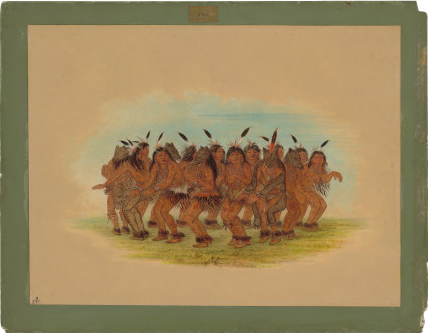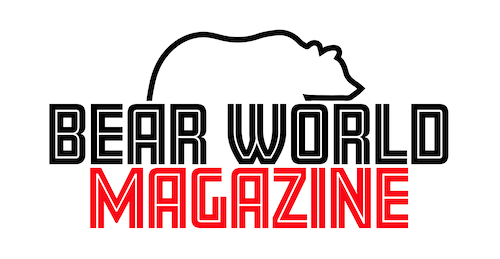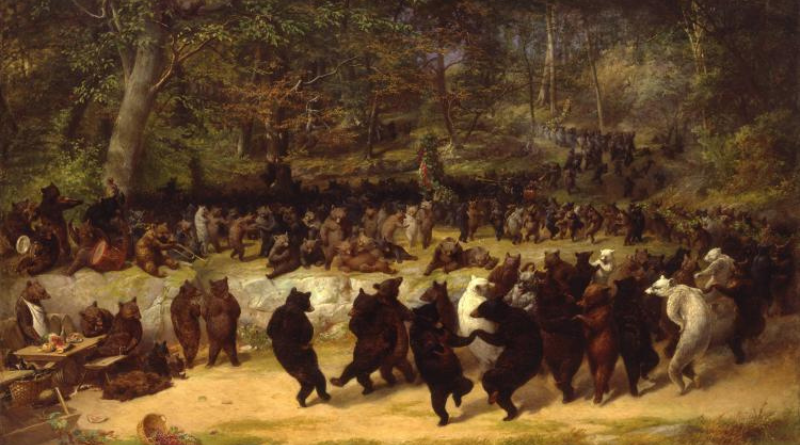Bear Tracks: The Mythic Bear Clan
Bears are found all over the northern hemisphere and native peoples have ascribed a variety of attributes and powers to the bear, symbolic meanings that vary from culture to culture. Native Americans, who also valorize bears in ways varying from tribe to tribe, tend to place the bear at the top- of their totemic systems. However, the bear most called to mind these days is the teddy bear. Named after President Theodore (“Teddy”) Roosevelt (a nickname he hated), stuffed teddy bear is a children’s toy loved for being cute, cuddly and safe. Paddington Bear, Winnie the Pooh, Yogi Bear, and other fictional ursine characters stem from this declawed version of the bear.
Men who are on the heavy, hairy, and bearded side have long been nicknamed bears. Gay men who began identifying themselves as bears embraced not just the physical attributes, but also qualities such as tenderness, warmth, and nurturance. A big ol’ bear may appear gruff, but you know you can count on him for hugs. The valorization of bears as sexually desirable was a great shift in the gay world. (History shows that standards of physical and sexual attractiveness change over time. Not that long ago, large-sized women described themselves in personal ads as “Rubenesque.”)

In Michael S. Ramsey’s 1997 essay “The Bear Clan: North American Totemic Mythology, Belief, and Legend” he considers four symbolic characteristics of the bear in North American tribes: the healer, the creator, the warrior, and the renewer. Among native Americans the bears symbolizes strength, protection, nobility, patience, family, vitality, courage, health, transformation, and playfulness. The Navajo believe bears are spiritual guides with healing powers and symbolize soul searching, insight, and introspection. The Cherokee also see the bear as a spirit guide. Ramsey considers the multiple ways bear clubs and individuals wove the elements together to create their own meaning. Most significant has been their transmutation into a homoerotic ideal.
There is another tradition of bear symbiology that has so far gone unnoticed in the gay bear community. Among the Ainu) of northern Japan (noted for being hairy, the Basques, Germanic, Slavic, and Finnish peoples, and most notably early Celts there is the foundational myth of humans descending from the bear, namely the male offspring of a mating between a bear and a human woman. Artio is a Celtic bear goddess worshipped since paleolithic times.
The Bear Dance is a ceremonial dance, notably among the Utes, performed to awaken the bear from hibernation, strengthen social bonds, and encourage mating. In the United States painter William Holbrook Beard employed animals to mimic and satirize human behavior. His 1870 painting “The Bear Dance,” also known as “The Bears of Wall Street Celebrating a Drop om the Stock Market” hung on the walls of many a gay bear in the 1980s and 1990s. The late singer-songwriter Martin Foster Swinger enlisted the children’s song “Uncle Walter Goes Dancing with Bears” as an affectionate and loving tribute to the seductive powers of gay bears. Such is the lure of bears that In the song Uncle Walter cannot resist slipping out of bed at night to go into the woods and dance with the bears. Martin always performed this sone whenever he attended bear gatherings with his husband Brian Kaufman. I had the pleasure of hearing it for the first time at a fundraiser bear cabaret I organized in Boston in 1999. In a future column I will address the history of bear music.
This column is in loving memory of Martin, a beautiful, loving soul who was taken from us too soon.
**If anyone can share additional information about their experiences of connecting traditions of bear symbolism with contemporary bear identities, please do so in the comments.
Help Les K Wright in his quest to document bear history by joining the Bear History Project International where you and a group of like-minded individuals can exchange ideas and help to preserve bear history and culture.














